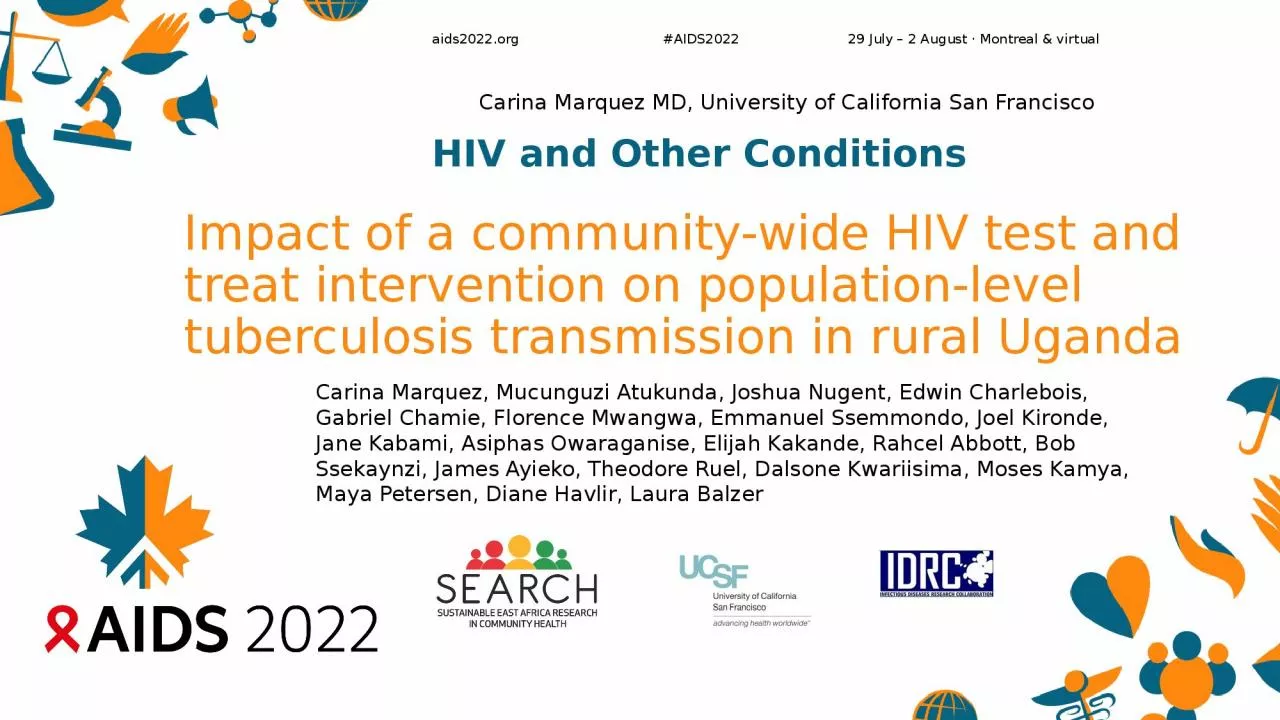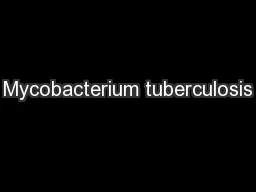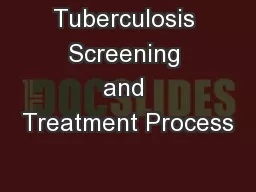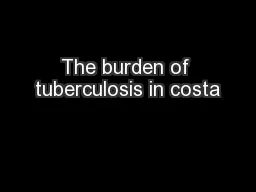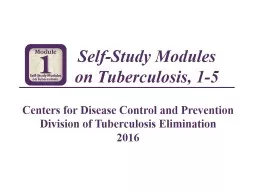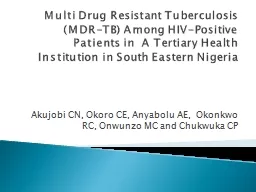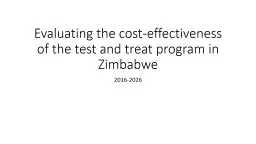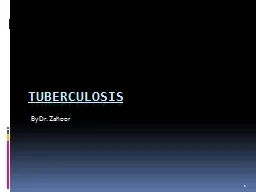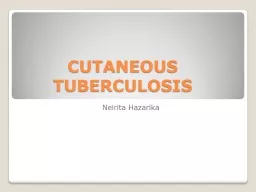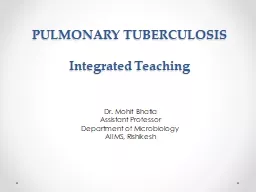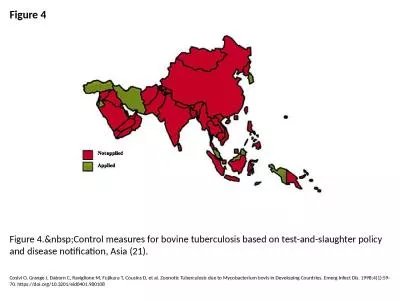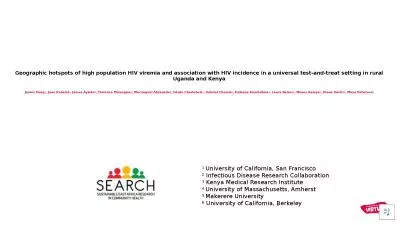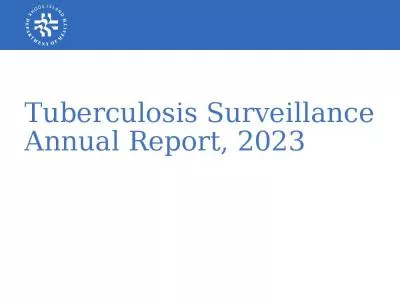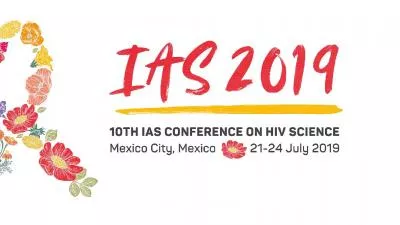PPT-Impact of a community-wide HIV test and treat intervention on population-level tuberculosis
Author : amelia | Published Date : 2023-11-18
HIV and Other Conditions Carina Marquez MD University of California San Francisco Carina Marquez Mucunguzi Atukunda Joshua Nugent Edwin Charlebois Gabriel Chamie
Presentation Embed Code
Download Presentation
Download Presentation The PPT/PDF document "Impact of a community-wide HIV test and ..." is the property of its rightful owner. Permission is granted to download and print the materials on this website for personal, non-commercial use only, and to display it on your personal computer provided you do not modify the materials and that you retain all copyright notices contained in the materials. By downloading content from our website, you accept the terms of this agreement.
Impact of a community-wide HIV test and treat intervention on population-level tuberculosis: Transcript
Download Rules Of Document
"Impact of a community-wide HIV test and treat intervention on population-level tuberculosis"The content belongs to its owner. You may download and print it for personal use, without modification, and keep all copyright notices. By downloading, you agree to these terms.
Related Documents

